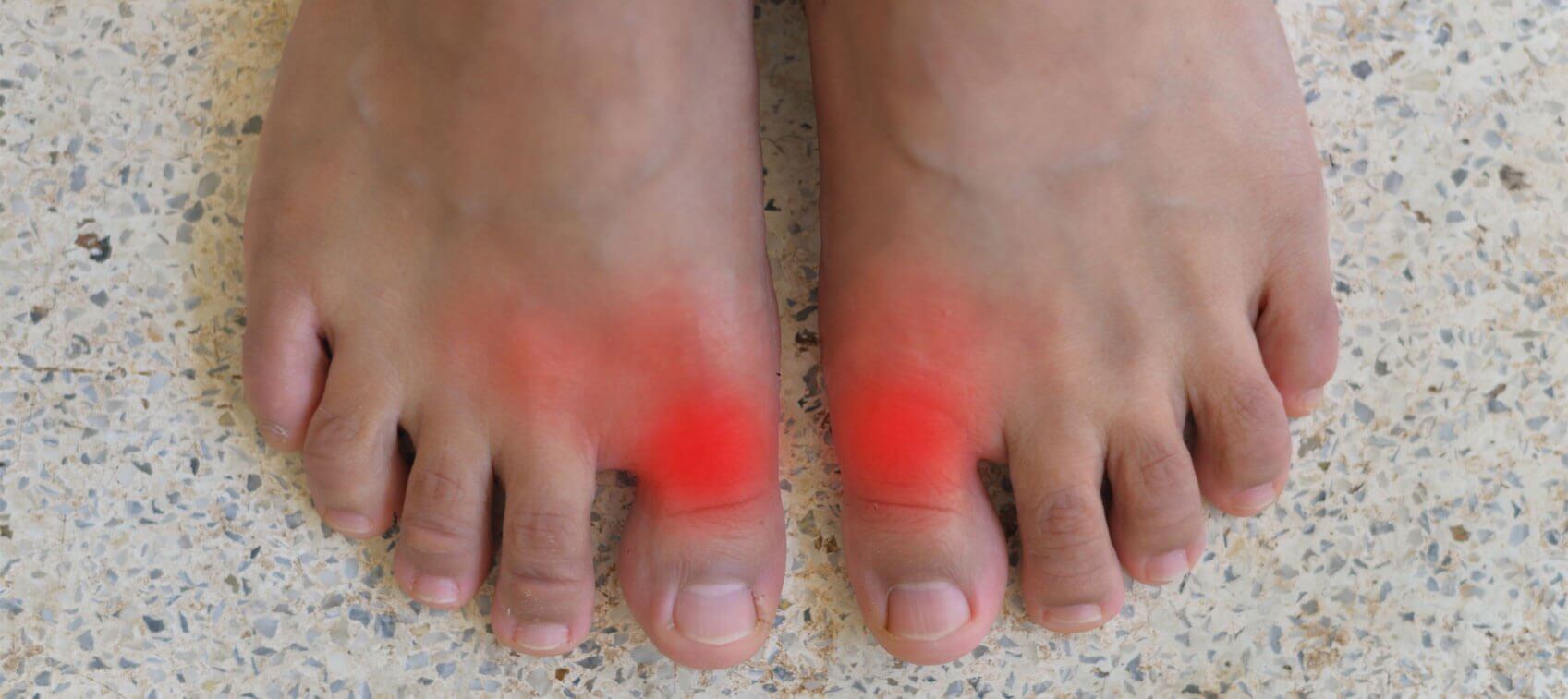
Gout is a form of arthritis that is usually localized to the joint at the base of the big toe. It is caused by excess uric acid in the bloodstream.
Given the range of side effects associated with traditional gout medications, many people prefer natural ways to treat gout. Here are some of my recommendations for doing that.
Cherries and Gout
Cherries can be very effective natural way to treat gout. Tart cherries in particular contain powerful antioxidants called anthocyanins, which give cherries their distinctive red color. Tart cherries are actually one of the richest sources of anthocyanins 1 and 2, which help block pro-inflammatory COX-1 and COX-2.
Cherries have traditionally been used to promote normal levels of uric acid and alleviate the pain associated with this condition.
The first known published study on cherries and gout dates back to 1950 in Texas Reports on Biology and Medicine. Dr. Ludwig W. Blau, the investigator, was himself affected by gout—so much so that he was confined to a wheelchair. After eating cherries, he noticed that his gout pain and swelling were considerably reduced. When he stopped eating cherries, his pain and swelling returned.
In a 2003 study, 280 grams of cherries (about 45 cherries) was given to 10 healthy women. Blood uric acid levels decreased by 14% after five hours, and excretion of uric acid increased.
And in a 2011 study, 10 overweight and obese participants consumed 8 oz per day of either 100% tart cherry juice or a placebo for four weeks. Although participants had normal uric acid levels, seven participants displayed reduced serum uric acid levels after drinking tart cherry juice. The erythrocyte sedimentation rate (ESR), an indicator of chronic inflammation, was significantly lower with the tart cherry juice versus placebo.
Many people have reported keeping their gout symptoms under control by watching their diet and eating just 10–12 cherries a day. Cherry juice can also be used. Cherries can be fresh, canned, or frozen. Just make sure they contain no added sugar.
If you don't like the taste of cherries, I recommend giving tart cherry extract, in supplement form, a try. Take 1,000 mg daily.
Celery Seed Extract
Celery seed extract is another natural way to treat gout that works consistently.
Celery seed oil contains natural phthalides, such as 3-n-butyl phthalide (3nB). These phthalides are what give celery its distinct odor.
While research on celery for gout is still in its early stages, researchers are particularly excited about 3nB.
In one 12-week pilot study, 15 subjects (suffering from osteoarthritis, osteoporosis, or gout) received 34 mg of a proprietary celery seed extract standardized to contain 85 percent phthalides twice daily. Participants experienced significant pain relief after three weeks, and most achieved maximum benefit after six weeks of use.
In a larger 70-patient study, participants received 75 mg of celery extract twice daily for three weeks. At this higher dosage, subjects reported even better results than in the pilot study. Statistically and clinically significant reductions were noted in pain scores, mobility, and quality of life.
Start with 2–4 capsules a day and then gradually cut back as soon as the pain and inflammation subsides. Maintenance dosages vary from person to person, so you'll need to experiment a bit to see what level works best for you.
DMSO
Dimethylsulfoxide (DMSO) is a clear, colorless, slightly oily liquid that has been used for years to treat gout, arthritis, and other joint pain.
I recommend that everyone keep a pint of 99.9 percent pure liquid DMSO on hand. DMSO should always be diluted with distilled water. In the majority of conditions, DMSO works best when it is in 70 to 90 percent concentrations—70 percent DMSO and 30 percent distilled water, or 90 percent DMSO and 10 percent distilled water.
Using your fingers or a cotton ball or swab, apply DMSO directly to the skin where you are experiencing arthritic pain. Most authorities suggest dabbing DMSO onto an area, but rubbing it on has been shown to improve the absorption time by up to 50 percent. A typical application is 1–3 teaspoons. For acute injuries, apply DMSO every two hours for six to eight hours following the injury. For the next five days or so, apply once every four to six hours. You can buy DMSO at health food stores and from online retailers.
B Vitamins
B Vitamins help prevent stress-induced rises in uric acid levels. B1 (thiamine) and B5 (pantothenic acid) are especially helpful in making uric acid more easy to excrete. Yeast-free B vitamins are recommended.
Olive Leaf Extract
Olive leave extract often provides relief from gout symptoms within a week to 10 days. Start with a dosage that would provide somewhere between 150 and 450 mg of oleuropein a day.
Additional References
Soundararajan S and Daunter B: Ajvine: Pilot biomedical study for pain relief in rheumatic pain. School of Medicine, The University of Queensland, Brisbane, Queensland, Australia, 1991–92.
Venkat S, Soundararajan S, Daunter B, and Madhusudhan S. Use of Ayurvedic medicine in the treatment of rheumatic illness. Department of Orthopaedics, Kovai Medical Center and Hospitals, Coimbatore, India, 1995.


